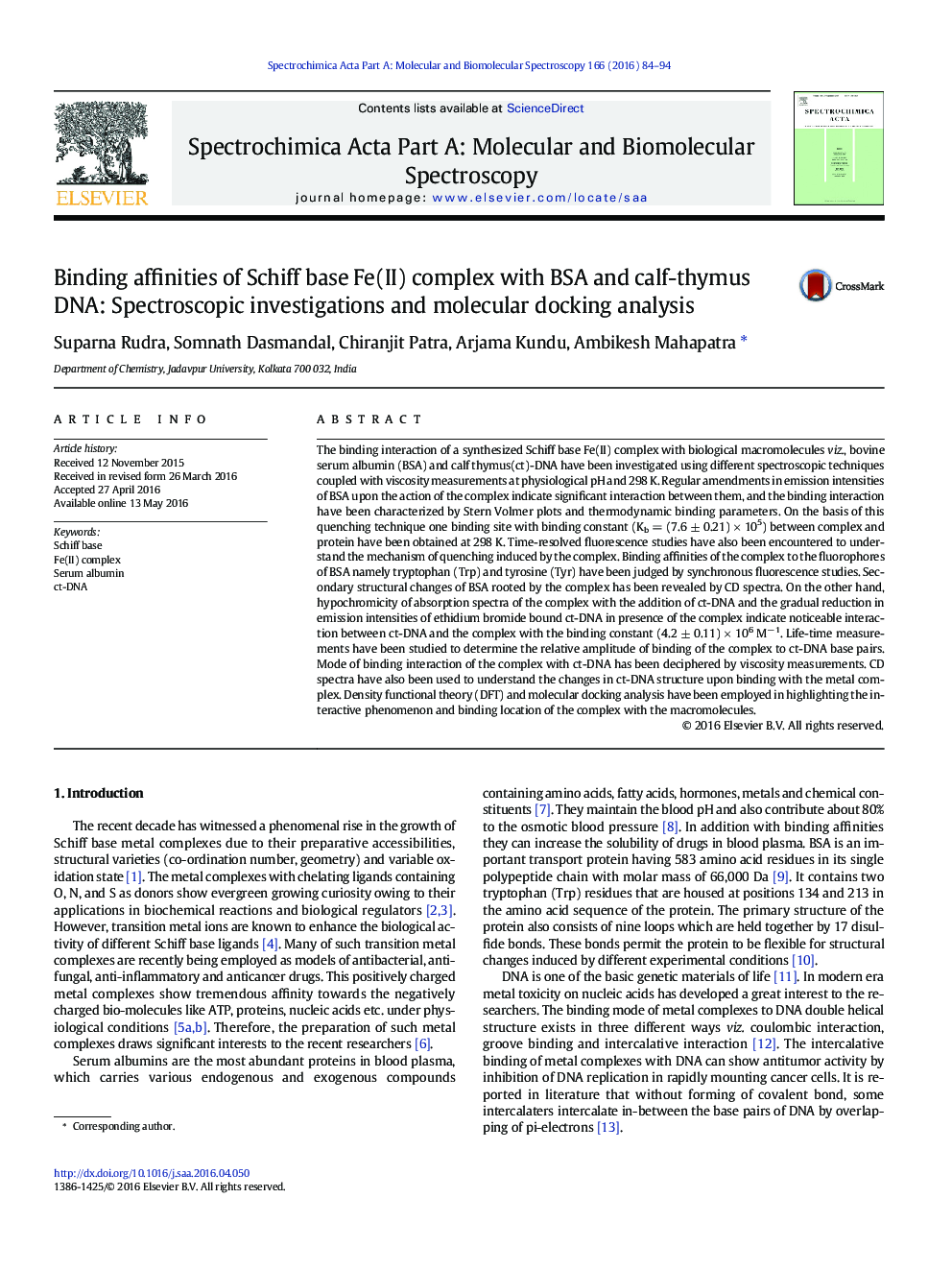| Article ID | Journal | Published Year | Pages | File Type |
|---|---|---|---|---|
| 1230652 | Spectrochimica Acta Part A: Molecular and Biomolecular Spectroscopy | 2016 | 11 Pages |
The binding interaction of a synthesized Schiff base Fe(II) complex with biological macromolecules viz., bovine serum albumin (BSA) and calf thymus(ct)-DNA have been investigated using different spectroscopic techniques coupled with viscosity measurements at physiological pH and 298 K. Regular amendments in emission intensities of BSA upon the action of the complex indicate significant interaction between them, and the binding interaction have been characterized by Stern Volmer plots and thermodynamic binding parameters. On the basis of this quenching technique one binding site with binding constant (Kb = (7.6 ± 0.21) × 105) between complex and protein have been obtained at 298 K. Time-resolved fluorescence studies have also been encountered to understand the mechanism of quenching induced by the complex. Binding affinities of the complex to the fluorophores of BSA namely tryptophan (Trp) and tyrosine (Tyr) have been judged by synchronous fluorescence studies. Secondary structural changes of BSA rooted by the complex has been revealed by CD spectra. On the other hand, hypochromicity of absorption spectra of the complex with the addition of ct-DNA and the gradual reduction in emission intensities of ethidium bromide bound ct-DNA in presence of the complex indicate noticeable interaction between ct-DNA and the complex with the binding constant (4.2 ± 0.11) × 106 M− 1. Life-time measurements have been studied to determine the relative amplitude of binding of the complex to ct-DNA base pairs. Mode of binding interaction of the complex with ct-DNA has been deciphered by viscosity measurements. CD spectra have also been used to understand the changes in ct-DNA structure upon binding with the metal complex. Density functional theory (DFT) and molecular docking analysis have been employed in highlighting the interactive phenomenon and binding location of the complex with the macromolecules.
Graphical abstractFigure optionsDownload full-size imageDownload as PowerPoint slide
